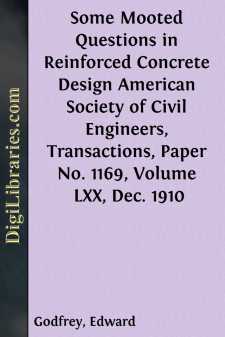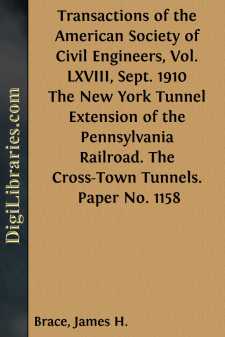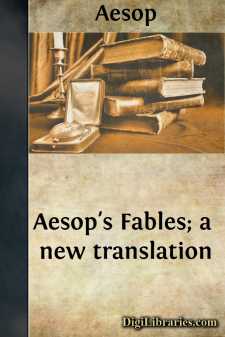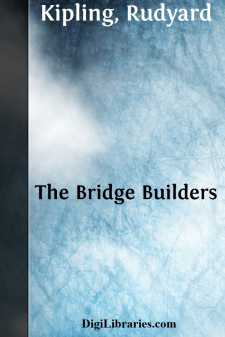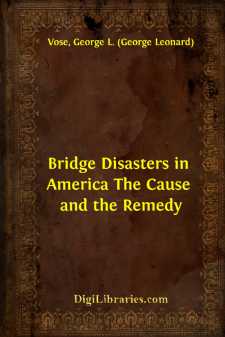Categories
- Antiques & Collectibles 13
- Architecture 36
- Art 48
- Bibles 22
- Biography & Autobiography 813
- Body, Mind & Spirit 142
- Business & Economics 28
- Children's Books 17
- Children's Fiction 14
- Computers 4
- Cooking 94
- Crafts & Hobbies 4
- Drama 346
- Education 46
- Family & Relationships 57
- Fiction 11829
- Games 19
- Gardening 17
- Health & Fitness 34
- History 1377
- House & Home 1
- Humor 147
- Juvenile Fiction 1873
- Juvenile Nonfiction 202
- Language Arts & Disciplines 88
- Law 16
- Literary Collections 686
- Literary Criticism 179
- Mathematics 13
- Medical 41
- Music 40
- Nature 179
- Non-Classifiable 1768
- Performing Arts 7
- Periodicals 1453
- Philosophy 64
- Photography 2
- Poetry 896
- Political Science 203
- Psychology 42
- Reference 154
- Religion 513
- Science 126
- Self-Help 84
- Social Science 81
- Sports & Recreation 34
- Study Aids 3
- Technology & Engineering 59
- Transportation 23
- Travel 463
- True Crime 29
Some Mooted Questions in Reinforced Concrete Design American Society of Civil Engineers, Transactions, Paper No. 1169, Volume LXX, Dec. 1910
by: Edward Godfrey
Categories:
Description:
Excerpt
With Discussion by Messrs. Joseph Wright, S. Bent Russell, J.R. Worcester, L.J. Mensch, Walter W. Clifford, J.C. Meem, George H. Myers, Edwin Thacher, C.A.P. Turner, Paul Chapman, E.P. Goodrich, Albin H. Beyer, John C. Ostrup, Harry F. Porter, John Stephen Sewell, Sanford E. Thompson, and Edward Godfrey.
Not many years ago physicians had certain rules and practices by which they were guided as to when and where to bleed a patient in order to relieve or cure him. What of those rules and practices to-day? If they were logical, why have they been abandoned?
It is the purpose of this paper to show that reinforced concrete engineers have certain rules and practices which are no more logical than those governing the blood-letting of former days. If the writer fails in this, by reason of the more weighty arguments on the other side of the questions he propounds, he will at least have brought out good reasons which will stand the test of logic for the rules and practices which he proposes to condemn, and which, at the present time, are quite lacking in the voluminous literature on this comparatively new subject.
Destructive criticism has recently been decried in an editorial in an engineering journal. Some kinds of destructive criticism are of the highest benefit; when it succeeds in destroying error, it is reconstructive. No reform was ever accomplished without it, and no reformer ever existed who was not a destructive critic. If showing up errors and faults is destructive criticism, we cannot have too much of it; in fact, we cannot advance without it. If engineering practice is to be purged of its inconsistencies and absurdities, it will never be done by dwelling on its excellencies.
Reinforced concrete engineering has fairly leaped into prominence and apparently into full growth, but it still wears some of its swaddling-bands. Some of the garments which it borrowed from sister forms of construction in its short infancy still cling to it, and, while these were, perhaps, the best makeshifts under the circumstances, they fit badly and should be discarded. It is some of these misfits and absurdities which the writer would like to bring prominently before the Engineering Profession.
Fig. 1.
The first point to which attention is called, is illustrated in . It concerns sharp bends in reinforcing rods in concrete. shows a reinforced concrete design, one held out, in nearly all books on the subject, as a model. The reinforcing rod is bent up at a sharp angle, and then may or may not be bent again and run parallel with the top of the beam. At the bend is a condition which resembles that of a hog-chain or truss-rod around a queen-post. The reinforcing rod is the hog-chain or the truss-rod. Where is the queen-post? Suppose this rod has a section of 1 sq. in. and an inclination of 60° with the horizontal, and that its unit stress is 16,000 lb. per sq. in. The forces, a and b, are then 16,000 lb. The force, c, must be also 16000 lb. What is to take this force, c, of 16,000 lb.? There is nothing but concrete. At 500 lb. per sq. in., this force would require an area of 32 sq. in. Will some advocate of this type of design please state where this area can be found? It must, of necessity, be in contact with the rod, and, for structural reasons, because of the lack of stiffness in the rod, it would have to be close to the point of bend....


